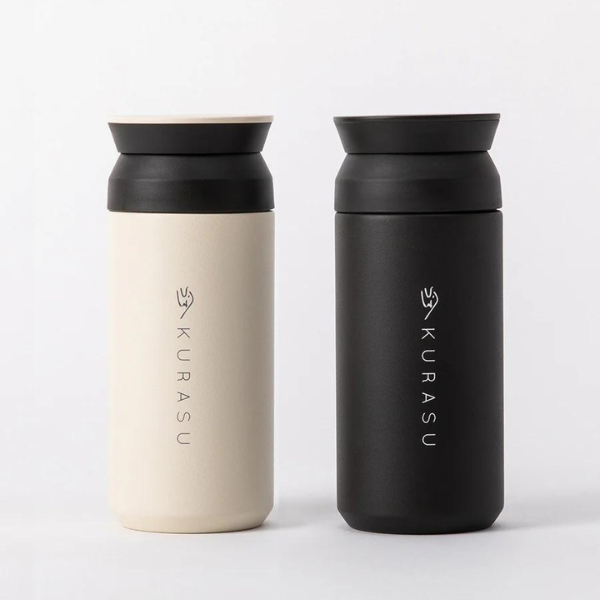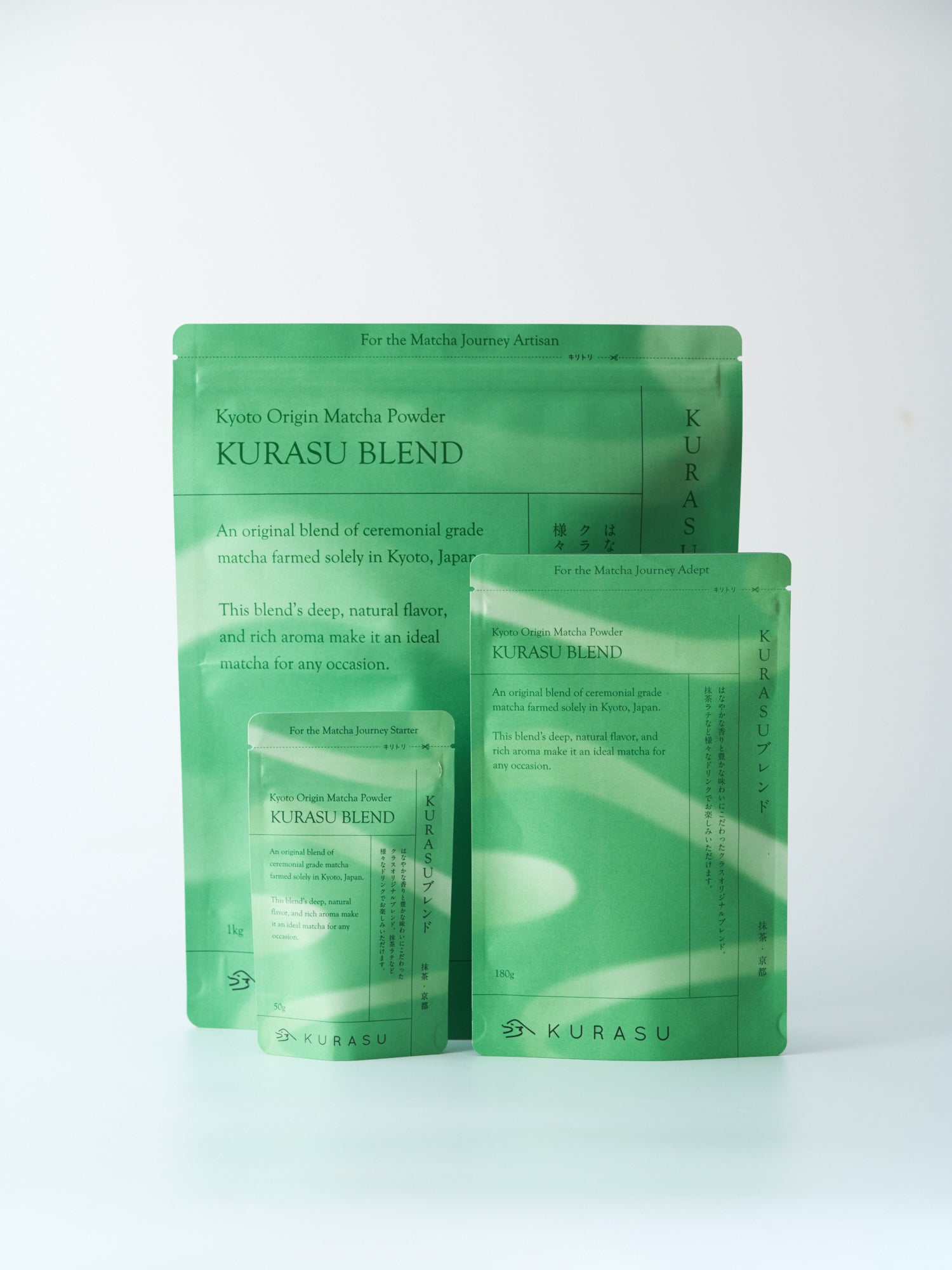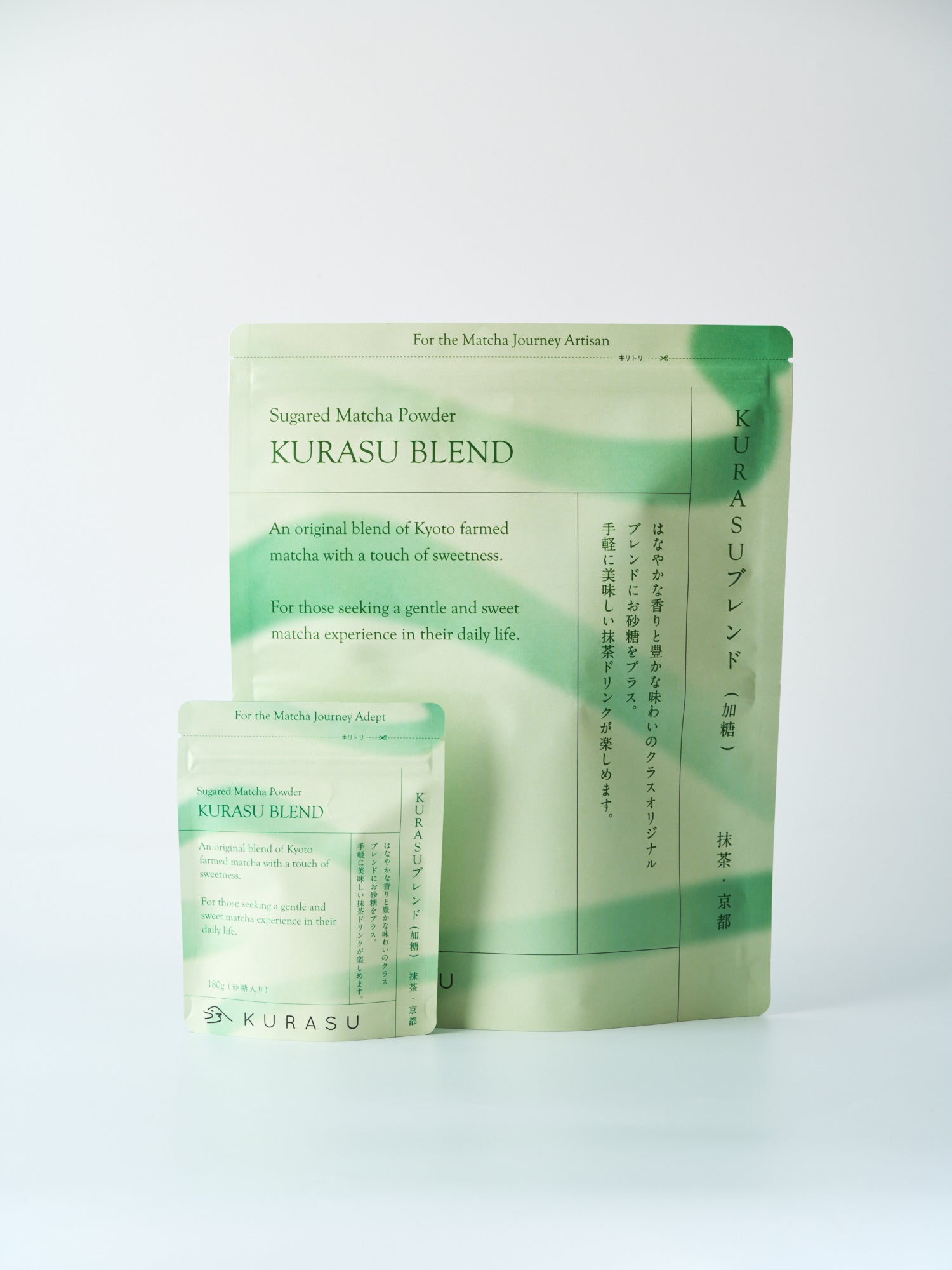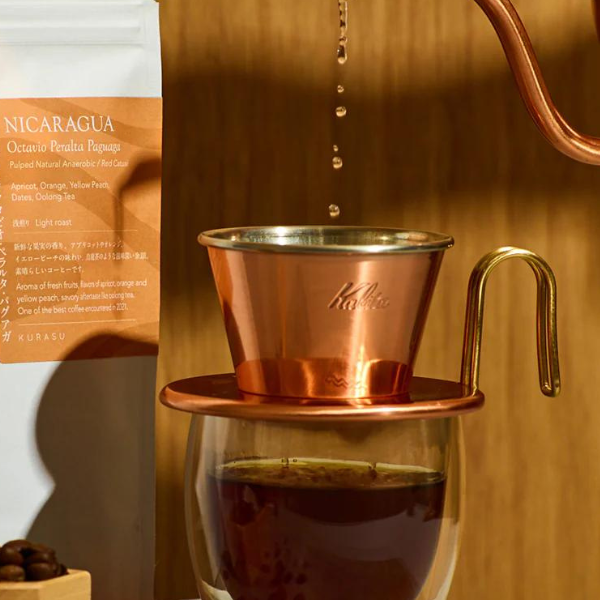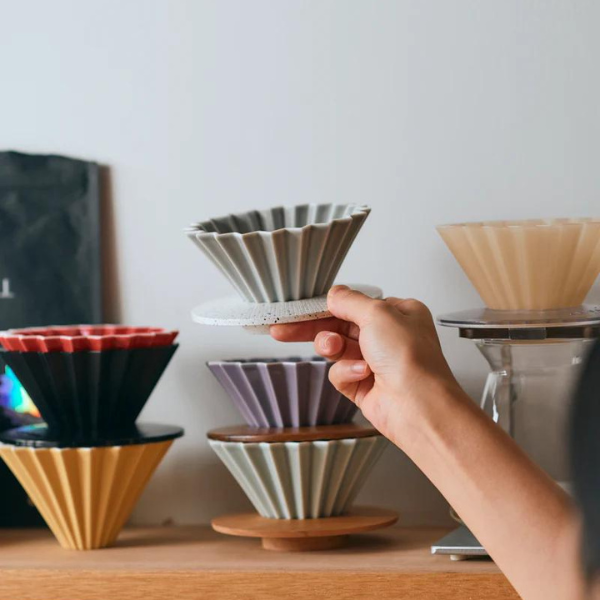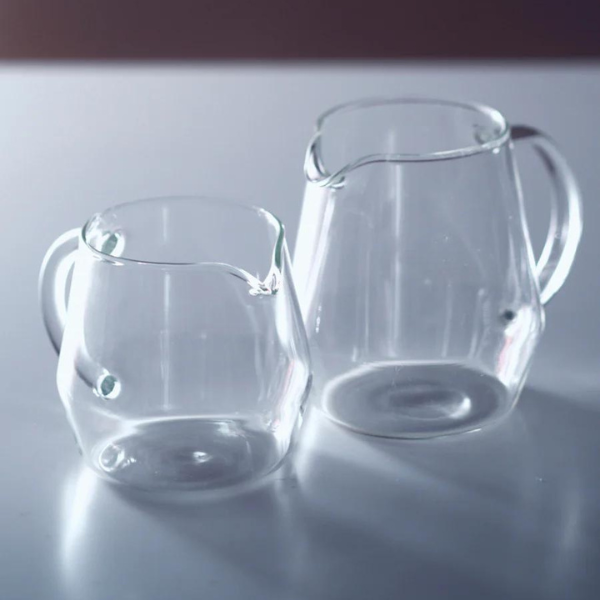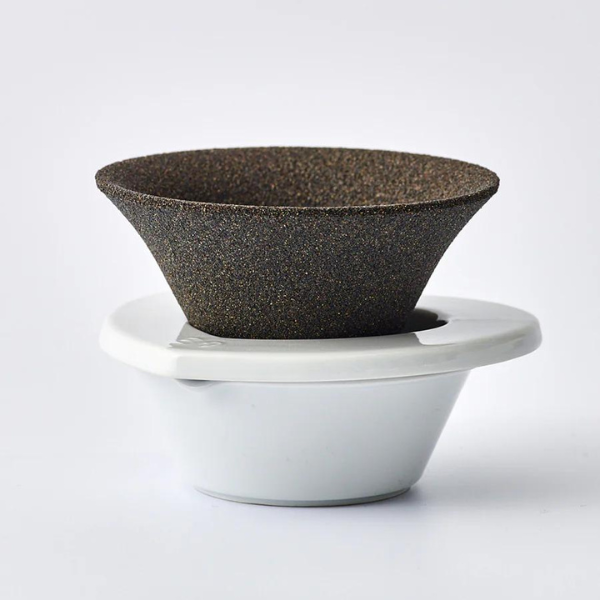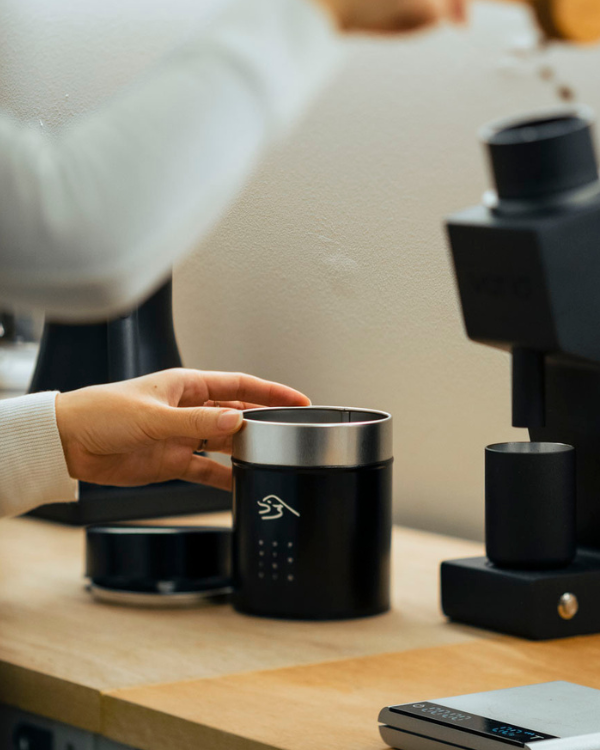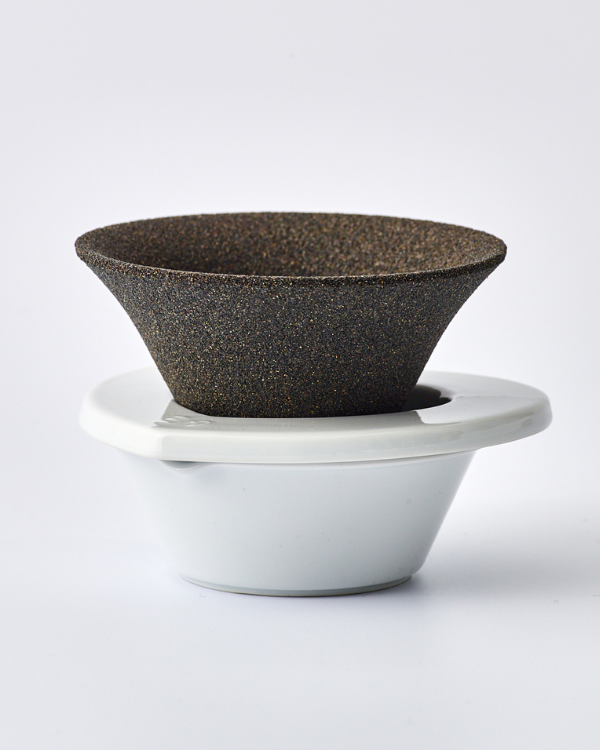The next #KurasuPartnerRoaster is GLITCH COFFEE & ROASTERS in Jimbocho, Tokyo.

The owner and the head roaster, Suzuki-san, worked for Paul Bassett Espresso Cafes during their early days, helping to establish the brand. He received the training from Paul Bassett himself, and proved his skill as a top barista and chief roaster during his career. What led him to his success as one of the most popular roasters in Japan? What is his story? We interviewed Suzuki-san to find out.

How It Started
Suzuki-san started his career in sales. While he wasn't unhappy, he wasn’t “happy”. He was feeling that working for a company wasn't really his calling- there were too many restrictions and he couldn’t really shine. So one day, he decided to set out on his own and try absolutely everything he had an interest in to find if there was something that worked for him. During this time he tried pottery, jewelry crafting, motor cycle repairing...anything and everything he loved! Whenever he had a little free time after visiting his final client of the day, he would visit his favorite shops and ask the shop owners about how they ran their business, or even asked if he could get job experience there without any salary.
His quest continued like that for 4 years, but nothing provoked a revelation for him. He was surrounded by pottery and jewellery he had made, feeling like he hasn’t created anything that people really appreciated - until one friend’s visit changed everything. That friend asked for a cup of coffee, and, on a whim, Suzuki-san served in in one of his handmade mugs - the reaction was overwhelmingly positive. Suzuki-san felt there must be something special about it, and serving his friends coffee became his new routine.
“Everyone loved it, praising my work both on mugs and coffee. I’ve never had that kind of reaction when I was just showing my creations to people. Seeing my friends enjoying something I had done for them made me extremely happy, and suddenly I realized that it is rare to be thanked and praised this often in daily life, especially at work, whereas making a cup of coffee for someone does that.”
After noticing the spark of happiness a cup of coffee can create, Suzuki-san became even more interested in coffee. All the different kind of coffee gear and brewing methods mesmerized him, and the idea of opening a cafe that reflected his ideal, free lifestyle while pursuing good coffee and making people happy just felt like the dream he had been looking for.

Suzuki-san’s Voyage to His Dream
Soon after, Suzuki-san decided to get a job in food industry to gain more experience. He picked BAR DEL SOLE in Roppongi, a famous Italian restaurant and espresso bar. He went through the most intensive training there- “I worked both as a barista and a chef, and it was really hard. It was so hard that many would quit on their first day. But the work ethic there was so strong and I could learn so much from the top-class chefs and baristas, and that’s what made me who I am today” Suzuki-san reflects. However, the excessive working hours finally caught up after a year and Suzuki-san had no choice but to leave to recover his health.
While he was recuperating back in his hometown in Tochigi, he was already fixating on the next stage- learn more about coffee itself. Through his previous job, he gained the skills and knowledge about espresso and latte making, but not so much about how different origins and roast can make a difference, or how to create a blend and why it exists. Suzuki-san went back to Tokyo and knocked the door of Camel Coffee, one of the major coffee beans merchants. There, Suzuki-san expressed his hunger for knowledge and experiences outside of his job description. At first it confused his bosses and colleagues, but they gradually gave in and even trained him by holding intensive cupping sessions and taking him to their roasting facility something no one else in his position was allowed to do.
Later, the first Australian world barista championship winner, Paul Bassett joined Japanese coffee market and opened several branches. Suzuki-san seized the opportunity to be directly mentored by the world’s best barista, and immediately applied to become a barista under him.
Among the wealth of experienced staff recruited to boost the brand, Suzuki-san was quickly promoted first to the top barista, then chief roaster before becoming the manager. Even after becoming independent, Suzuki-san still visits them once a month to provide a quality check, as well as providing advice whenever the brand has a new project.
Through his 13 years of work, Suzuki-san has seen many trends in the market come and go, and roasted with numerous roasting machines including Renegade, Tokyo Sanki Kogyo, Fuji Royal and Probat. As time went by, Suzuki-san decided that he wanted to jump out of the brand’s roasting style and freely explore his own.

GLITCH COFFEE & ROASTERS’ Coffee
The area Suzuki-san chose for his shop is Jimbocho. The area is close to the Imperial Palace, and it still retains the historical atmosphere. There are restaurants and stores with 3rd and 4th generations of history, and locally loved kissatens. Suzuki-san fell in love with the timeless beauty of the area and chose there to start his next chapter.
GLITCH COFFEE & ROASTERS quickly became famous for its hand drip heavy brewing style, and became one of the most talked-about cafes among baristas at the time.
“I wanted to express each origin’s characteristics and recreate the surprise and joy I felt when I first encountered good coffee. That’s why I go for manually brewed filter-for example, if your first experience is a latte of a Brazilian/Colombian blend, you won’t know what makes Brazilian coffee special, and how it will then taste with milk. I value a step by step learning process so that people can understand the coffee and appreciate it.”
GLITCH COFFEE & ROASTERS heavily leans towards light roast- as Suzuki-san already had experiences with it through trial and error, his roasting style and the direction he wanted to take were mostly determined at the early stage. Suzuki-san then took that idea further and sought out the exact kind of light roast he preferred, and as his skill developed and became sophisticated, he felt the importance of green beans more than ever. Today, he routinely visits farms and gets involved in the purchasing in order to realize his ideal coffee.
Suzuki-san chose Probat after experiencing many different roasters. He explained that the newer models have more detailed and meticulous settings, and that enables him to flexibly change the roasting technique according to the weather and season.

His Journey Continues
If you look around GLITCH COFFEE & ROASTERS, you would notice that sometimes more than half of the customers there are either travellers or people with a non-Japanese background. Some people even make the cafe as their main travel destination on holiday. Suzuki-san told us that while it is wonderful that Japanese coffee is increasing its presence in the global market, he feels that the future is still not secure.
“I feel that there’s a tide coming for Japanese coffee. People are starting to talk about it, and that’s good. But I am worried that if we stay shy and quiet, we will miss the opportunity and this culture would eventually dies out. We need to go out and show what we can do. My fellow roaster and namesake, Suzuki-san from TRUNK COFFEE is a great example. We should follow his example, hop around the world promoting Japanese coffee. We have great stuff, and we should prove that.”
Suzuki-san was very frank and fun throughout the interview. Every story from the various stages of his life showed us that his strong will and the ability to keep himself always motivated and persistent brought him the success he achieved, and he will continue to be a pioneering barista and iconic roaster of the Japanese coffee scene.



